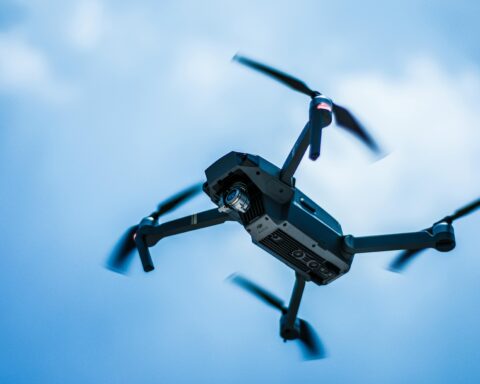What would you do if you could get anywhere within 100 miles in under an hour? That question – posed by Caryn Moore Lund, president of public policy, regulatory and government affairs for Ferrovial Airports – is at the heart of advanced air mobility (AAM).
“There’s going to be networks of vertiports that are going to allow for a much higher degree of connectivity and real value in time savings,” Lund said. “Compared to the other options that are currently available, (vertiports are) much more flexible, much more adaptable and really provide a ton of value in time saving for the user.”
Lund was speaking to “The Connection: Partnering Public & Private Entities,” a companion podcast to Government Market News. The bi-weekly podcast is specifically for professionals navigating the intricacies of government procurement, public-private partnerships and policy innovation.
Ferrovial Airports is a private airport investor and operator that is developing vertiport networks in the U.S. and Europe. Vertiports – small, secure facilities that allow electric vertical takeoff and landing aircraft (EVTOLs) to operate – are one of the latest developments in the AAM world.
EVTOLs differ from traditional planes and helicopters in that they are powered by batteries, meaning they have a lower noise output and zero emissions. They’re not like hover drones, though. These aircraft, designed to carry two to six passengers, including a pilot, will have a cruising altitude of 2,500 to 5,000 feet and speeds of up to 200 mph.
Vertiports operate most similarly to heliports and are defined as an area that can support the take-off and landing operations of EVTOL aircraft. The FAA regulations for the standard design of a vertiport includes specifications such as charging infrastructure and takeoff-area size. The regulations have stipulations for vertiport additions to current airports or on top of existing structures.
“What this allows a Vertiport to be is a much smaller, more convenient, more proximal aviation facility that can integrate into a community or a business development or point of interest and allow for aviation to serve that facility versus just having aviation at airports,” Lund said.
The aircraft to be used at vertiports are going through their first safety certifications this year. Companies like Choby, Archer, Volocopter and Beta are starting flight campaigns for the aircraft that will eventually fly in and out of vertiports.
Once the aircraft receive the necessary safety certifications, companies will begin integrating them into a network of vertiports nationwide and commercialize flights. At the same time, EVTOLs are being adapted for military purposes under the Air Force’s Agility Prime Program.
“The companies are well underway on developing production facilities. They’ve been really savvy in engaging with auto (original equipment manufacturers) … to ensure production capabilities, supply chain management, some of those things that the major car companies are great at,” Lund said.
When vertiports hit the market, the vehicles will have to fly under specific weather conditions, including clear skies, Lund anticipates. This is why she believes Florida will be the first state in the U.S. to see operational vertiports, followed by southern California and Texas.
One of the concerns with introducing vertiports commercially is the already-congested air traffic space. Ferrovial Airports is considering building off existing helicopter routes, which have received noise and emission complaints, Lund said.
“The step one would be replacing some of those helicopter operations with EVTOL operations, making them more sustainable, making them more accessible at the lower price point and allowing those to be supplanted by EVTOLs. Well, then we can ramp up,” Lund said.
The vehicles can be manufactured and operated cheaper than airplanes or helicopters because they don’t require the price of fuel, are smaller and lightweight.
Vertiports also won’t be as numerous as airports, especially in the beginning. The idea is to build out a network of major connectivity points and to integrate into existing businesses and communities.
While there are still unknowns, federal organizations like the Federal Aviation Administration (FAA) and NASA are beginning to discuss the future of advanced air mobility more recently. The FAA released an implementation plan last summer to begin AAM operations by 2028.
Meanwhile, the FAA has proposed an update to the definition of “aeronautical activity” in the Office of Airports policy. Specifically, the FAA is calling for AAM, unmanned aircraft systems (UAS) and commercial space launch or re-entry vehicle operations to be included in the definition.
However, groups like the National Business Aviation Association (NBAA), have challenged the proposed changes. The current definition states, “Any activity that involves, makes possible, or is required for the operation of aircraft or that contributes to or is required to the safety of such operations,” which the NBAA, among other groups, says already includes AAM and UAM.
Their concern is that changing an already all-encompassing definition to include specific aircraft types will be confusing and possibly challenge precedent.
All news and information on this site is provided by the team at Strategic Partnerships, Inc. Check out this short 1-minute video that provides a quick overview of how we work with clients.








